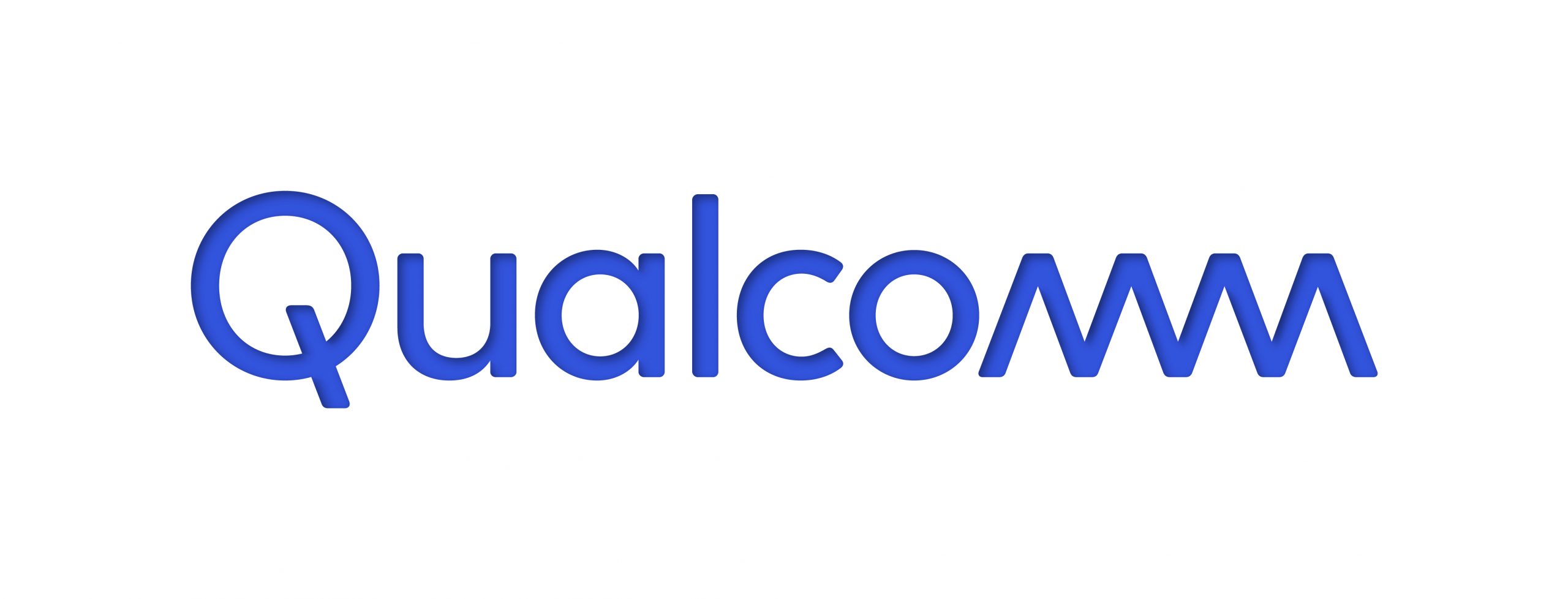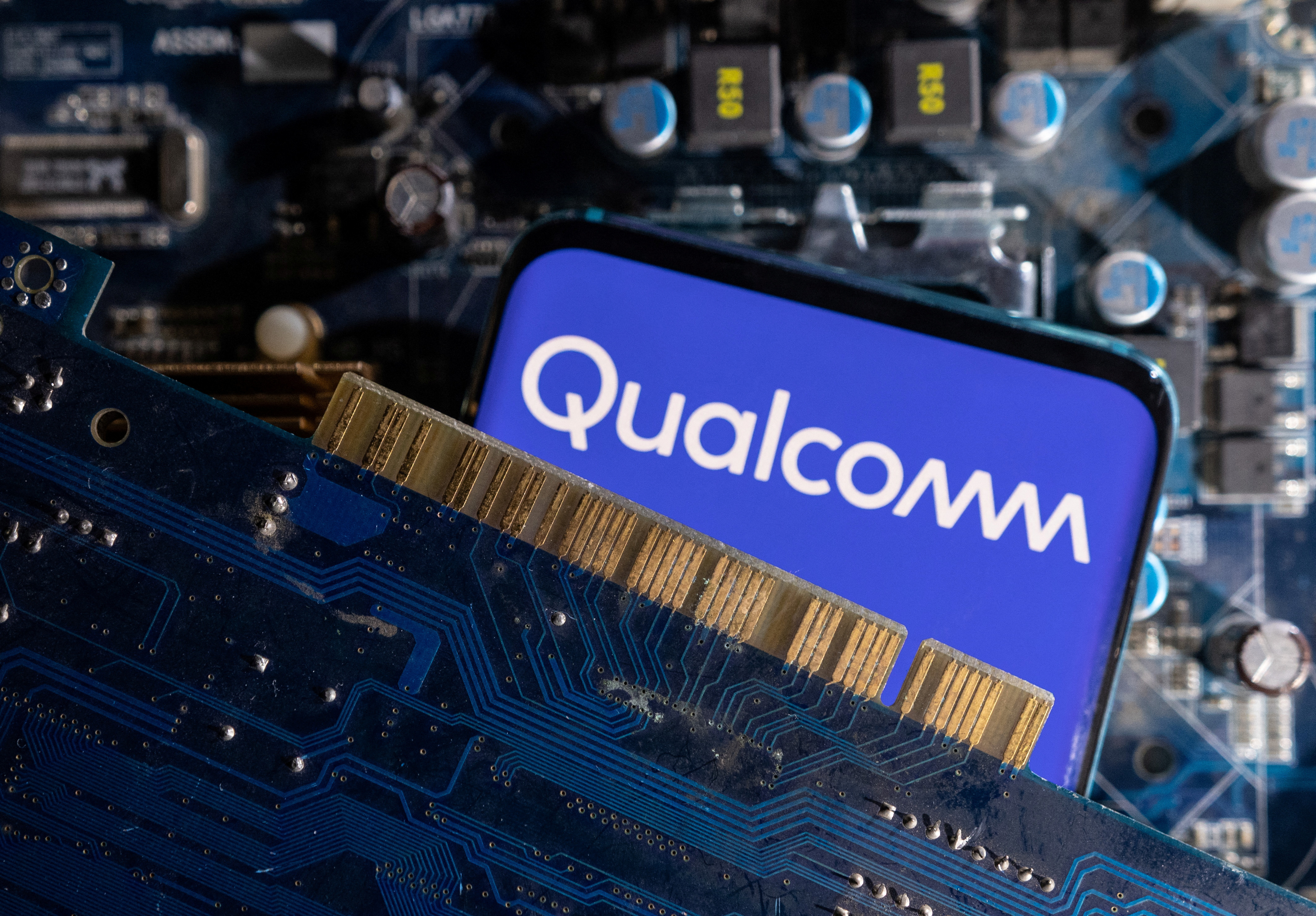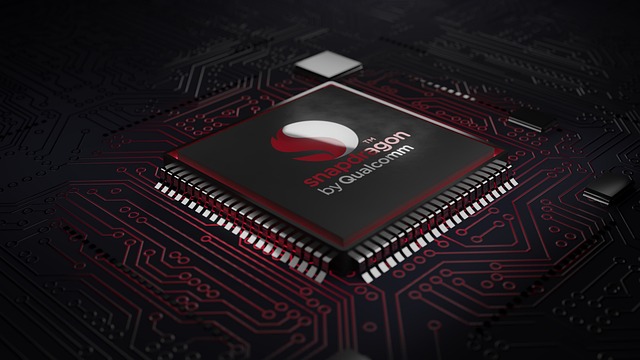HSBC Downgrades Qualcomm to Hold Amid AI PC Market Concerns, Shares Drop 8%

Qualcomm (NASDAQ:QCOM) shares dropped more than 8% on Wednesday after HSBC downgraded the company to Hold, expressing caution due to a lack of catalysts and a less optimistic outlook on the AI PC market. The target price was slightly raised to $200 from $190, but analysts remain wary about the stock’s near-term prospects.
HSBC predicts Qualcomm’s Q3/24 results will align with consensus estimates, expecting revenue of $9.3 billion, just above the consensus of $9.2 billion. The gross margin for Q3/24 is forecasted at 55.9%, slightly below the Street estimate of 56.1%.
Looking ahead to Q4/24, HSBC foresees revenue remaining flat at $9.3 billion, falling short of the consensus estimate of $9.8 billion due to anticipated lower handset revenue. The gross margin for Q4 is projected to drop to 55.6%, compared to the consensus of 55.9%.
HSBC points to ongoing uncertainties in the smartphone market, particularly with a projected 15% quarter-over-quarter decline in China’s Android handset market.
Additionally, the rollout of the 3nm-based Snapdragon Gen 4 is expected to pressure gross margins as higher costs outpace the average selling price premium. Potential unit shipment losses from 4G SoCs at Huawei also contribute to the cautious outlook.
| Symbol | Price | %chg |
|---|---|---|
| AMD.BA | 11500 | 0 |
| TXN.BA | 40525 | 0 |
| 000660.KS | 164800 | -10.56 |
| LRCX.BA | 1420 | 0 |
| Quant |
| Sector | |
| Industry | |
| Quant Rating | |
| Quant Score |

Qualcomm Incorporated (NASDAQ:QCOM): A Strong Contender in the 5G Space
- Recent performance shows a 30-day gain of 5.78%, with a slight dip of 2.23% over the past 10 days, suggesting a potential buying opportunity.
- Analysts project a growth potential of 12.16% for QCOM, with a target price of $188.75, indicating confidence in its future performance.
- Strong fundamentals are highlighted by a Piotroski Score of 8, suggesting robust financial health and a stable foundation for growth.
Qualcomm Incorporated (NASDAQ:QCOM) is a leading player in the technology sector, known for its innovations in wireless technology and semiconductor solutions. The company is a key supplier of chips for mobile devices and has a strong presence in the 5G market. Competitors include companies like Intel and Broadcom, but Qualcomm's unique position in the 5G space sets it apart.
In recent performance, QCOM has shown resilience with a 30-day gain of 5.78%, indicating a positive trend. Despite a 2.23% decline over the past 10 days, this dip may offer a strategic buying opportunity. The stock's local minimum suggests potential for recovery, aligning with its overall upward trajectory.
Looking ahead, analysts project a 12.16% growth potential for QCOM, highlighting significant upside. The target price of $188.75 reflects confidence in the stock's ability to rebound. This growth potential is supported by Qualcomm's strong market position and ongoing innovations in technology.
Fundamentally, QCOM is robust, with a Piotroski Score of 8. This score indicates strong financial health, encompassing profitability, leverage, liquidity, and operating efficiency. Such solid fundamentals provide a stable foundation for future growth and investor confidence.
Overall, Qualcomm's blend of recent performance, growth potential, and strong fundamentals makes it an attractive investment. The recent price dip could be a strategic entry point for investors seeking exposure to a leading technology company with a promising future.

Qualcomm Initiated at Hold with $180 Price Target Amid Slowing Growth Outlook
Melius Research initiated coverage on Qualcomm (NASDAQ:QCOM) with a Hold rating and a price target of $180, reflecting a valuation of approximately 14 times the firm's fiscal 2027 earnings per share estimate of $12.52.
The analysts acknowledged Qualcomm's long-standing reputation as a pioneer in mobile technology and its track record of innovation in high-performance chipsets. However, concerns over slowing growth weighed on the outlook. Revenue growth is projected to decelerate from high single digits to just 3% over the next two years, significantly lagging the mid-teens average of comparable companies in an AI-driven market cycle.
This anticipated slowdown led to a valuation at the lower end of the peer group, tempering expectations despite Qualcomm’s strong intellectual property and attractive positioning within the semiconductor industry.

Qualcomm (NASDAQ:QCOM) Coverage Initiated by Loop Capital Markets
- Loop Capital Markets has initiated coverage on Qualcomm (NASDAQ:QCOM) with a "Hold" rating and a stock price of $168.29.
- Qualcomm's strong performance in its fourth-quarter earnings report, particularly in handset revenue and AI chip performance, positions the company for future growth.
- The company announced a $15 billion stock repurchase program, despite concerns over future growth due to potential competition from Apple's in-house 5G modems.
On November 11, 2024, Loop Capital Markets initiated coverage on Qualcomm (NASDAQ:QCOM) with a "Hold" rating. At that time, the stock price was $168.29. Qualcomm is a leading player in the semiconductor industry, known for its innovations in wireless technology and AI chips. It faces competition from companies like Intel and MediaTek.
Qualcomm's shares have been stagnant recently, but the growing AI smartphone market is expected to benefit the company. In its fourth-quarter earnings report, Qualcomm exceeded expectations, showing strong growth in handset revenue and AI chip performance. This positions the company well for future growth, despite the current "Hold" rating.
The company's valuation is attractive, with a low price-to-earnings ratio and strong projected revenue growth. This presents significant upside potential for investors. Despite the positive earnings report, analysts remain divided on the future prospects of the handset market, which could impact Qualcomm's performance moving forward, as highlighted by Benzinga.
Qualcomm has announced a substantial $15 billion stock repurchase program, reflecting confidence in its financial health. However, concerns about future growth persist due to Apple's potential shift to developing its own in-house 5G modems. This transition could reduce Qualcomm's revenue by 3% from fiscal year 2026 to 2028.
Despite these challenges, Qualcomm's Snapdragon 8 Elite and growth in the AI PC market present potential opportunities. The current stock price of $168.29 reflects a decrease of 1.533% or $2.62. Over the past year, QCOM has reached a high of $230.63 and a low of $122.63, with a market capitalization of approximately $186.97 billion.

Qualcomm Surges 8% on Strong Earnings and Promising Outlook
Qualcomm (NASDAQ:QCOM) rallied more than 8% in pre-market today after posting stronger-than-anticipated fourth-quarter results and providing robust guidance, signaling an upturn in smartphone chip demand. The company also announced a substantial $15 billion stock buyback program.
For the quarter, Qualcomm reported adjusted earnings per share of $2.69 on revenue of $10.24 billion, surpassing Wall Street expectations of $2.56 EPS on $9.9 billion revenue. The outperformance was largely fueled by its core handset chip division, which recorded a 12% sales increase to $6.10 billion year-over-year.
Looking ahead to the first fiscal quarter, Qualcomm projected adjusted EPS between $2.85 and $3.05, with anticipated revenue ranging from $10.5 billion to $11.3 billion. This guidance at the midpoint exceeded analyst estimates of $2.87 EPS on $10.61 billion in revenue.

Wolfe Research Downgrades Qualcomm Amid Concerns Over Apple's Internal Modem Impact
Wolfe Research downgraded Qualcomm (NASDAQ:QCOM) to Peer Perform from Outperform, expressing growing concerns about the potential impact of Apple’s development of its own internal modem on Qualcomm's future revenue streams. The downgrade also involved removing the price target for Qualcomm’s stock, reflecting the increasing uncertainty surrounding the company's outlook.
Initially, Qualcomm had downplayed the threat posed by Apple's internal modem project, leading many in the market to adopt a skeptical stance. Wolfe Research acknowledges that Apple’s efforts to create its own modem have been an ongoing challenge, often dismissed as unlikely to materialize. However, new information suggests that Apple's modem development is now on track to enter the market, which could pose a significant threat to Qualcomm's core business.
Wolfe Research pointed out that Qualcomm had previously expected to supply modems for only 20% of the iPhone 18 models, a forecast that now appears overly optimistic. The analysts now foresee a more substantial impact, starting with the iPhone SE expected in the spring, followed by a more extensive rollout with the iPhone 17. By the time the iPhone 18 launches, Apple’s modem could be in nearly all of its phones outside the U.S., significantly diminishing Qualcomm's market share.
The firm has adjusted its revenue and earnings projections to account for this shift, estimating that Qualcomm could see a $4 billion revenue decline and a $1.50 drop in earnings per share between 2024 and 2026 as a result of losing Apple's business.
While Qualcomm has been working to diversify its portfolio, focusing on areas like AI handsets and the Internet of Things (IoT), Wolfe Research remains skeptical about the potential for these segments to offset the anticipated loss. The analysts suggest that these new ventures may prove to be a tougher sell to investors, especially in light of the looming challenges.
Wolfe Research concludes that, despite Qualcomm’s relatively attractive valuation at 15 times 2026 EPS, the loss of revenue from Apple and the uncertain prospects for future growth make it difficult to maintain a positive outlook on the stock.

Qualcomm's Financial Highlights and Future Prospects
- Qualcomm (NASDAQ:QCOM) reported an 11% year-over-year increase in quarterly revenue to $9.4 billion, with adjusted earnings up 25% to $2.33 per share.
- The company projects earnings of $2.55 per share on revenue of $9.9 billion for the current quarter, surpassing analysts' expectations.
- Qualcomm is well-positioned to capitalize on the rapidly growing market for AI-enabled smartphones, with revenue growth expected to reach double digits by fiscal 2025.
Qualcomm (NASDAQ:QCOM), a leading semiconductor and telecommunications equipment company, recently reported financial results that exceeded Wall Street's expectations. The company's quarterly revenue saw an 11% year-over-year increase to $9.4 billion, and adjusted earnings jumped 25% to $2.33 per share. These results surpassed analysts' forecasts, which had pegged earnings at $2.25 per share on revenue of $9.2 billion. Qualcomm's optimistic guidance for the current quarter further underscores its strong performance, projecting earnings of $2.55 per share on revenue of $9.9 billion, which is above analysts' expectations.
The company's financial health is further evidenced by its operational cash flow. In the recent quarter, Qualcomm reported a net cash provided by operating activities of $3.05 billion. Despite a net cash outflow of $1.04 billion for investing activities and $3.45 billion for financing activities, the company managed to achieve a free cash flow of $2.67 billion. This robust cash flow performance, coupled with capital expenditures of $387 million and debt repayments totaling $914 million, demonstrates Qualcomm's strong financial management and its ability to generate significant cash from its operations.
However, despite these strong financial results and a positive outlook, Qualcomm's stock experienced a more than 5% drop following the earnings announcement. This decline was partly attributed to CEO Cristiano Amon's cautious stance on the smartphone market's recovery, projecting a "kind of flattish to low single digits in growth." Yet, Amon also emphasized the rapid growth of premium, AI-enabled smartphones, which are expected to drive demand for high-end devices. According to Counterpoint Research, shipments of generative-AI-enabled smartphones are forecasted to quadruple between 2024 and 2027, eventually making up 43% of global smartphone shipments by 2027, up from 11% this year.
This shift towards AI-enabled smartphones presents a significant opportunity for Qualcomm. The company is well-positioned to capitalize on this trend, which could lead to substantial growth in both revenue and earnings over the next few years. Qualcomm is projected to end the current fiscal year with $38.6 billion in revenue, marking an 8% increase from the previous year. With the AI smartphone market expanding, Qualcomm's revenue growth is expected to reach double digits by fiscal 2025, potentially surpassing 10%. This growth trajectory, coupled with the company's strong cash flow and financial management, suggests that Qualcomm represents a valuable investment opportunity, especially when considering its current valuation compared to the broader market.

Qualcomm Posts Strong Q3 Earnings and Optimistic Guidance
Qualcomm (NASDAQ:QCOM) announced third-quarter results that surpassed analyst predictions and issued an upbeat forecast for the fourth quarter.
For the third quarter, Qualcomm reported earnings per share (EPS) of $2.33, which exceeded the Street estimate by $0.08. Revenue also came in stronger than expected at $9.39 billion, surpassing the projected $9.21 billion.
The market reacted positively not only to the earnings beat but also to Qualcomm's optimistic outlook for the fourth quarter of fiscal 2024. The company forecasted an EPS range of $2.45 to $2.65, with the midpoint of $2.55 higher than the Street estimate of $2.45.
Additionally, Qualcomm projected fourth-quarter revenue between $9.5 billion and $10.3 billion, surpassing the Street estimate of $9.71 billion, signaling potential continued growth.
President and CEO Cristiano Amon attributed the strong performance to the effective execution of Qualcomm's growth strategy and the impressive performance of its QCT segment in terms of quarterly revenues and EBT margins.
Amon also highlighted the introduction of the Snapdragon X Series solutions for PCs, marking a significant step in Qualcomm's evolution towards intelligent computing.







